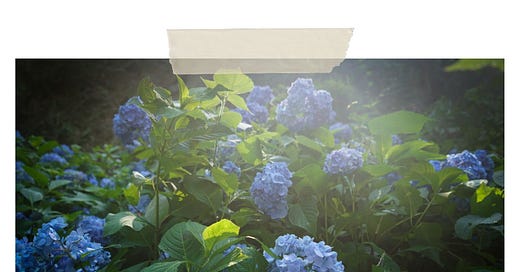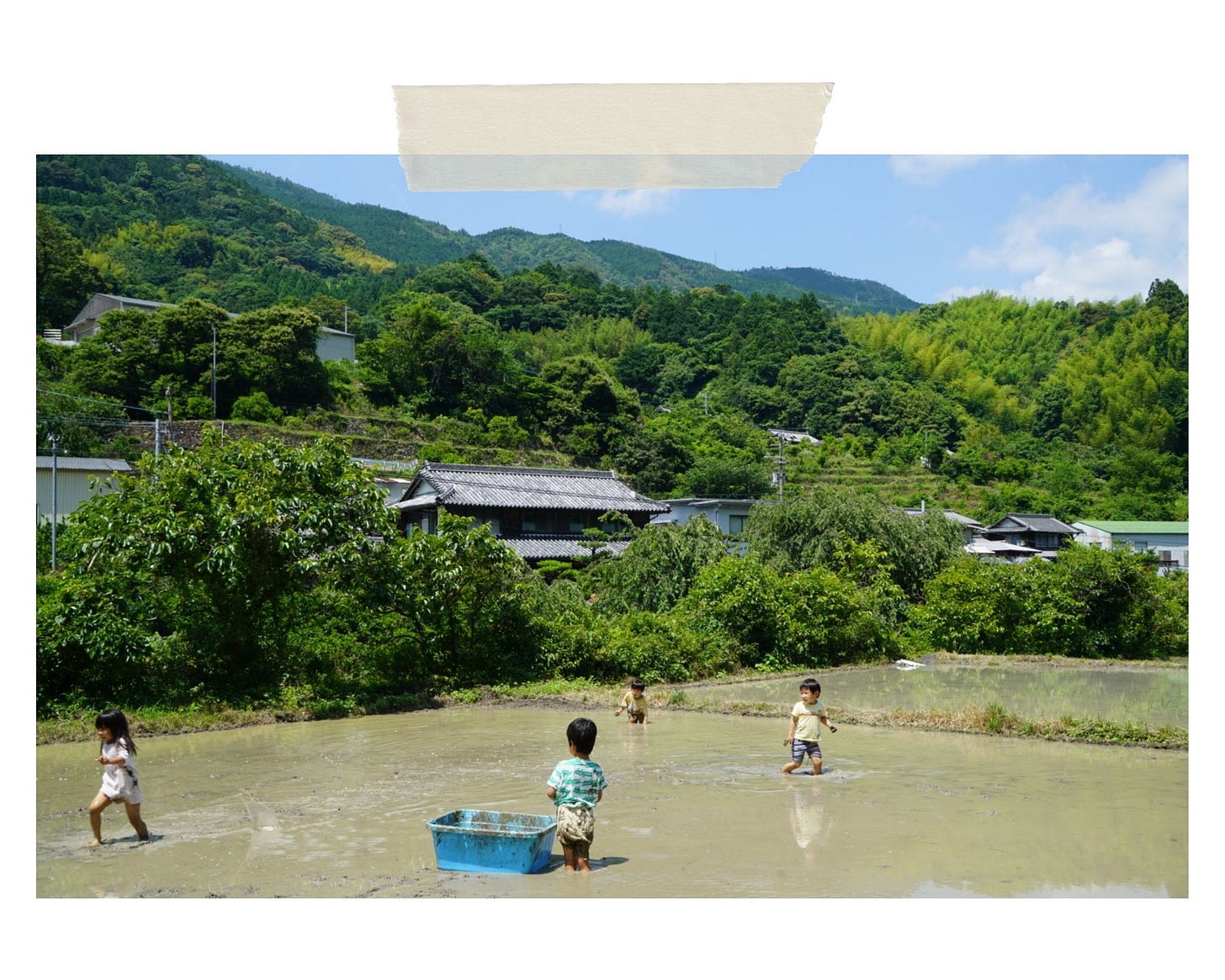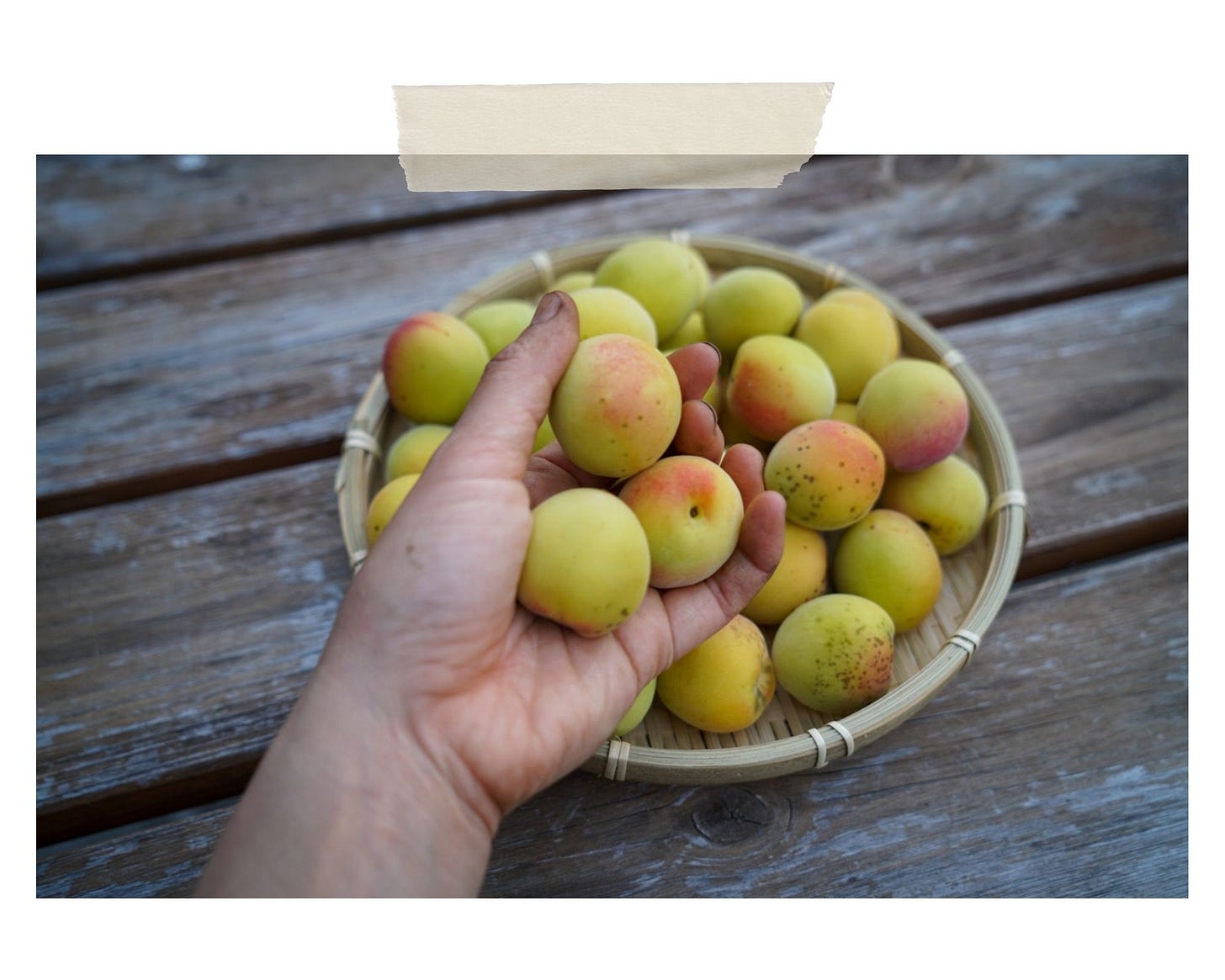A warm hello from Kamikatsu!
I’ve been enjoying the beautiful, wild ajisai (hydrangea) that is growing along the roads and in the mountains. The bundle of flowers looks like individual bouquets tended to and cultivated by nature—a gift to anyone who takes a moment to pause and appreciate the bloom of colours.
72 microseasons
I recently stumbled upon a detailed description of Japan’s 72 microseasons. The ancient Japanese calendar was divided into 24 seasons called seki, and each seki is further divided into three additional subcategories, ko. Each ko lasts roughly five days.
I had read about Japan’s microseasons before, but it sounded more like poetry than a lived understanding of each season. I also couldn’t put most of the things into perspective since I was in a city. I think the microseasons offer a lot of insight into the countryside, where nature is closer and more observable.
When I re-read the microseasonal calendar earlier this week, I realized that the description of the microseason aligned exactly with what I was experiencing. June 11–15 on the microseasonal calendar signals 腐草為螢—"fallen grass becomes fireflies." Just a couple of days ago, I found myself mesmerized by tiny shimmers of light glowing from the fireflies near the river. The deep darkness of the countryside, free from light pollution, makes it an incredible place to watch fireflies—and stars, which shine just as vividly. 梅子黄—"plums turn yellow"—between June 16–20, is also true to life.
I’m curious to keep exploring each microseason and attune myself to the shifting, cyclical patterns of the natural world we all share. Even if the poetic expressions in kanji don’t always match what’s happening outside, I think they serve as a simple reminder to pay attention to our surroundings—change happens in small increments.
These two weeks, I’ve cherished every day of sunshine in anticipation of tsuyu, which is Japan’s rainy season that lasts for about a month. Cold air from the north and warm air from the south meet, and the yearly rendezvous results in weeks of continuous downpour.
The air right now is noticeably more damp and hot—an uncomfortable muggy feeling lingers during the day; but when it’s evening, I can dim the lights and slide open the window and wait for a soft cool breeze (a reminder that it’s not summer yet).
One of my favourite landscapes in this season is the rice fields. Most farmers planted their rice about a month ago so all around me are mirror-like paddies filled with water and rice stalks that look like little bundles of grass.
Earlier this week, I helped plant rice in the neighbouring village of Sakamoto. We all entered the rice paddy barefoot. The coolness of the water and the slimy touch of the mud under my feet is a different kind of “earthing” experience—I highly recommend it. At some point in the afternoon, we ran out of rice seedlings to plant and there was nothing left to do but snack on sweet biwa, loquat, picked off from nearby trees.
The kids were rolling around in the unplanted rice field and it didn’t take long before a mud fight broke out (kids vs adults). It was a heartwarming cacophony of laughter, splashing water, and shouting.
In the countryside, each season offers an abundance. These past weeks, I’ve welcomed the abundance of ume (plums). Ume are plucked from trees in June when they are still green, sour, and unripe. The plums are rubbed down with salt and pressed with weights until a plum vinegar forms. Red shiso leaves are also broken down with a gentle salt rub and placed like a blanket over the ume to give them their pink colour.
Even though I grew up eating many fermented foods, I couldn’t have imagined doing my own pickling. As much as I enjoy my time in the kitchen cooking daily meals, there is extra happiness swirling in the air when I partake in the annual rituals of harvesting and preserving.
Umeboshi is pickled plum. It looks like a little dark pink ball and its perfect pairing is probably a steaming bowl of rice. It’s got a sour and acidic flavour that most people find startling. I remember last year I visited an art exhibition that featured photos of people’s faces when they first put an umeboshi in their mouth. It was basically a galley of funny, puckered faces.
Growing up in Canada, imported Japanese food was not always readily available or affordable. Umeboshi was one of the items that wasn’t easy to get or cheap. When we would buy a container of umeboshi, my mom and I would split one at dinner to savour it. I always wanted the half with the seed because I could enjoy it longer by keeping the seed in my mouth.
When I moved to the Japanese countryside, I was shocked at how cheap umeboshi was, it quickly went from a luxury good to a commonplace staple (as it is meant to be in Japan). I still savour each umeboshi, remembering all the times that it felt special and rare.
Thank you for reading this week’s post!
I leave you with a bit of writing by Yung Pueblo that resonated with me :
Joy is more available to you because you spend time cultivating your patience and your ability to appreciate the present moment. You know that there is still much to heal and more ways to grow, but now you are familiar with the rhythm of observing, accepting, letting go, and allowing transformation to occur organically.
I hope that resonates with you too. Let’s cultivate joy, patience, and presence in the week ahead.
Take care,
Kana











This has been my favorite edition of this newsletter so far. Having grown up in a farming area of the United States, I've always been curious to experience to Japanese countryside.
discovered your newsletter recently and have been really admiring every bit of it. thank you. will wait for the next 🌻